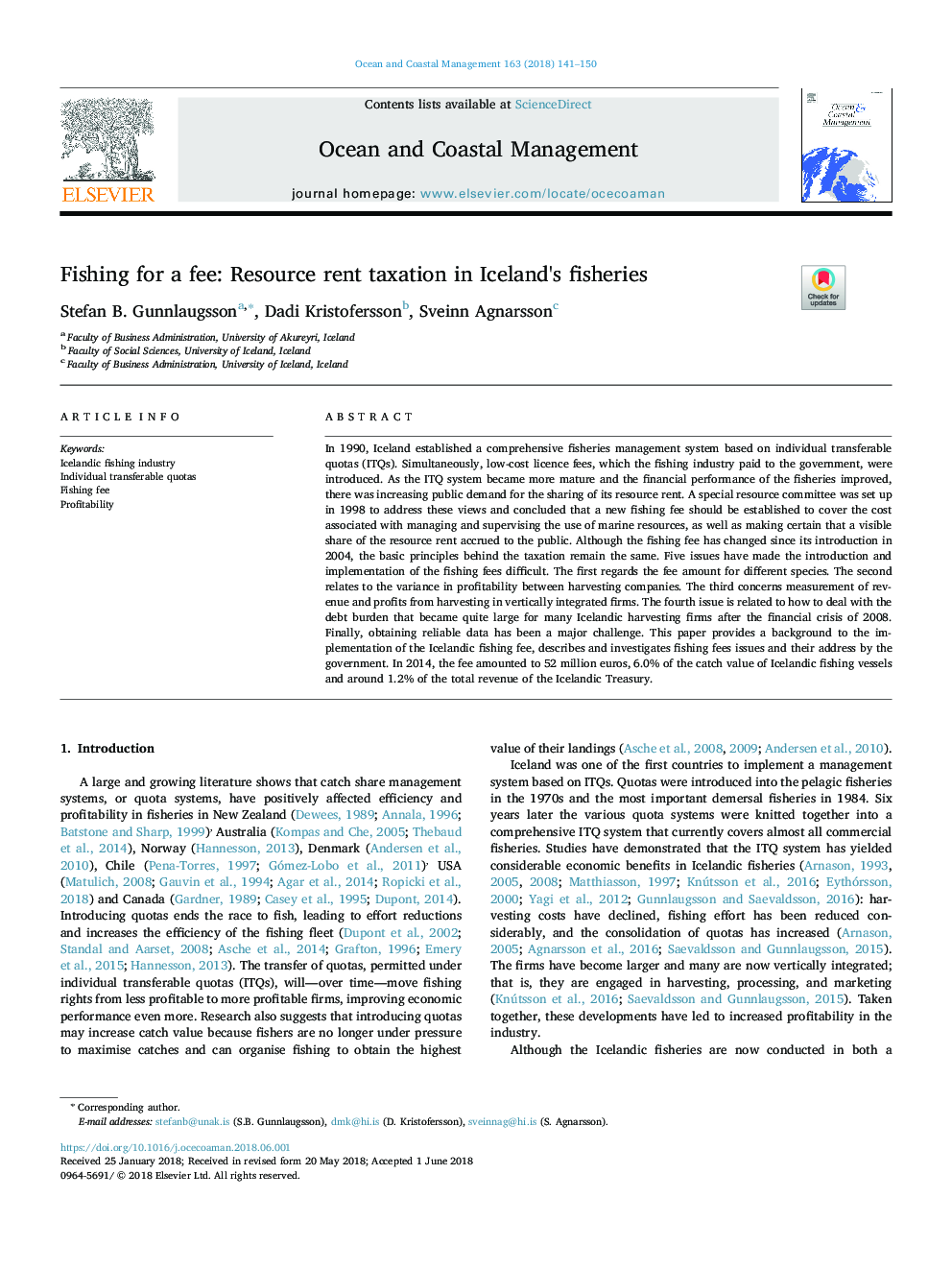| Article ID | Journal | Published Year | Pages | File Type |
|---|---|---|---|---|
| 8060524 | Ocean & Coastal Management | 2018 | 10 Pages |
Abstract
In 1990, Iceland established a comprehensive fisheries management system based on individual transferable quotas (ITQs). Simultaneously, low-cost licence fees, which the fishing industry paid to the government, were introduced. As the ITQ system became more mature and the financial performance of the fisheries improved, there was increasing public demand for the sharing of its resource rent. A special resource committee was set up in 1998 to address these views and concluded that a new fishing fee should be established to cover the cost associated with managing and supervising the use of marine resources, as well as making certain that a visible share of the resource rent accrued to the public. Although the fishing fee has changed since its introduction in 2004, the basic principles behind the taxation remain the same. Five issues have made the introduction and implementation of the fishing fees difficult. The first regards the fee amount for different species. The second relates to the variance in profitability between harvesting companies. The third concerns measurement of revenue and profits from harvesting in vertically integrated firms. The fourth issue is related to how to deal with the debt burden that became quite large for many Icelandic harvesting firms after the financial crisis of 2008. Finally, obtaining reliable data has been a major challenge. This paper provides a background to the implementation of the Icelandic fishing fee, describes and investigates fishing fees issues and their address by the government. In 2014, the fee amounted to 52 million euros, 6.0% of the catch value of Icelandic fishing vessels and around 1.2% of the total revenue of the Icelandic Treasury.
Related Topics
Physical Sciences and Engineering
Earth and Planetary Sciences
Oceanography
Authors
Stefan B. Gunnlaugsson, Dadi Kristofersson, Sveinn Agnarsson,
